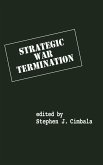When Ronald Reagan introduced the Strategic Defense Initiative (SDI) in 1983, he boldly challenged the long-accepted nuclear doctrine of mutual assured destruction. He argued that the development of this costly and complex missile defense system, popularly known as Star Wars, was the only viable and real alternative to the ongoing proliferation of nuclear weapons. While Reagan's vision unwittingly accelerated the end of the Cold War, SDI soon became a program shrouded in controversy. Costs soared and researchers struggled to develop the essential and successful technologies, although the threat of an atomic exchange with the former Soviet Union no longer loomed on the horizon. Despite those factors, SDI has survived. It remains in the active stages of development more than two decades after it was introduced, even as American policy makers struggle to counter the emerging threat posed by rogue states engaged in the active pursuit and development of atomic weapons. Devoid of any political agenda, Strategic Defense in the Nuclear Age presents a concise overview of the history of SDI, chronicling its successes and failures through the ongoing evolution of the program. It is the most up-to-date account on the market today. Sanford Lakoff is an established expert on the development of SDI. In this work, he chronicles the history of the program from its initial introduction during the Reagan years, through the ongoing struggles associated with research and development that plague the program to this day. Each chapter provides analysis of the strategic, scientific, and diplomatic challenges policy makers and scientists struggle to overcome, at the same time exploring the changing strategic needs and specific purposes for the program. Offering a glossary that provides an explanation of key scientific terms and an appendix by noted physicist Richard L. Garwin, this book will appeal to scholars and students, as well as to the general public.
Hinweis: Dieser Artikel kann nur an eine deutsche Lieferadresse ausgeliefert werden.
Hinweis: Dieser Artikel kann nur an eine deutsche Lieferadresse ausgeliefert werden.







